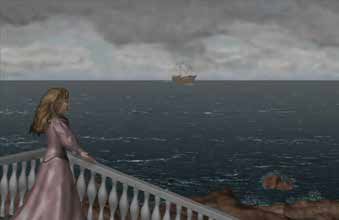Legendary and Marvelously Mysterious, Widow Walks Maintain a Storied Place in Martha’s Vineyard History Books
by Diane Alter
If you want to know and appreciate Martha’s Vineyard, really know and appreciate this idyllic island, you need to know its history. Covering many pages in history, guide, and tourists books dedicated to this unspoiled island are the fabled widow walks that accent scores of Vineyard homes.
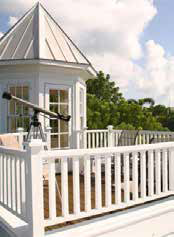 By definition, widow walks are a railed or balustraded platform built on a roof for providing an unobstructed view of the sea. Their origins can be traced back to New England in the late 1800s. Widow walks were constructed on homes to be used as a viewpoint for the hoped-for return of seafaring husbands.
By definition, widow walks are a railed or balustraded platform built on a roof for providing an unobstructed view of the sea. Their origins can be traced back to New England in the late 1800s. Widow walks were constructed on homes to be used as a viewpoint for the hoped-for return of seafaring husbands.
The most common legend of the widow walks, told time and again, goes something like this: “The faithful and dedicated wife performs her daily circumambulations on the cold and lonely widow walk. She hopes the next sail to appear on the horizon may very well carry her husband, who has been out to sea for so many years. But the sail she sees does not bring her husband home. No, not today. So as the fiery sun, redolent in rich reds, blazing oranges, and ripples of deep yellows, sets, the wife’s lonely vigil for the day is over. But she will be out on the widow’s walk tomorrow, and the day after that, and so on and so on, waiting and hoping for her husband’s return.”
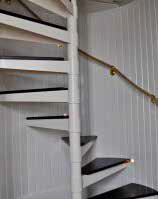 You see, at one time Martha’s Vineyard played a very important role in the whaling industry. The first whaleship on record to sail from the Vineyard was the schooner “Lydia.” With Peter Pease at the helm, the boat left Edgartown in 1765 for a voyage to Davis Straits.
You see, at one time Martha’s Vineyard played a very important role in the whaling industry. The first whaleship on record to sail from the Vineyard was the schooner “Lydia.” With Peter Pease at the helm, the boat left Edgartown in 1765 for a voyage to Davis Straits.
Before this time, whales were plentiful near the Vineyard’s shores and men would go out in small boats to capture them. But as all the whales close to shore were caught, men were forced to go farther and farther away from home. They were eventually obliged to travel so far from home that voyages lasted three to five years.
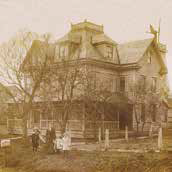 In 1850, Vineyard ships directed by bold and brave island men were sailing to every ocean corner. Indeed, during the island’s whaling heydays some 50 ships left Edgartown at one time. But time changes everything.
In 1850, Vineyard ships directed by bold and brave island men were sailing to every ocean corner. Indeed, during the island’s whaling heydays some 50 ships left Edgartown at one time. But time changes everything.
As Martha’s Vineyard and other New England seaside settlements morphed from whaling communities into diverse towns with successful economies, widow walks remained, yet they became more of an aesthetic statement. Ornate domes and other fanciful flourishes were added to the widow walks for beautification. Relators recognized the widow walks’ usefulness in their lucrativeness. These more stylistic architectural structures provided priceless ocean views.
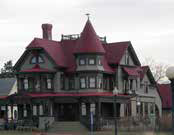 Still, the next time you are out and admiring Vineyard homes adorned with decorative widow walks, take a moment to remember their original purpose. And if you are out at night, a dark and stormy night of course, what you might see in a haze on some widow walks will surely make your hair stand on its ends.
Still, the next time you are out and admiring Vineyard homes adorned with decorative widow walks, take a moment to remember their original purpose. And if you are out at night, a dark and stormy night of course, what you might see in a haze on some widow walks will surely make your hair stand on its ends.
The End.

